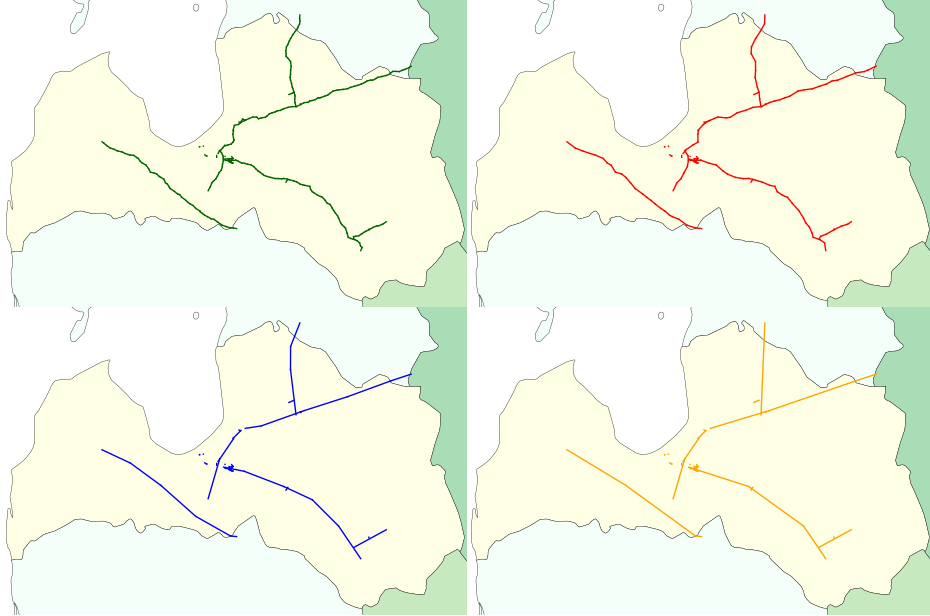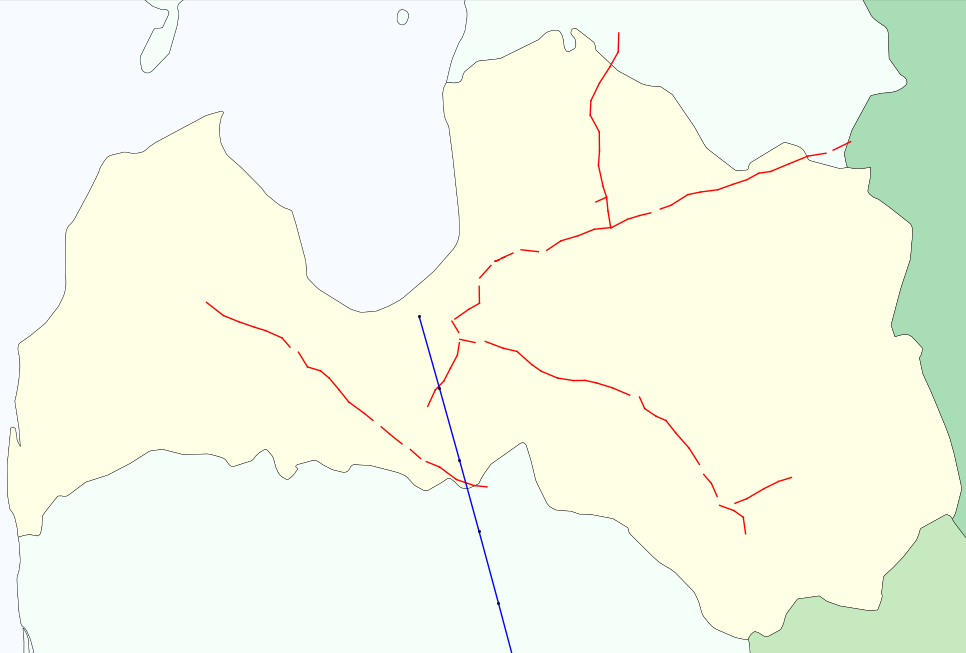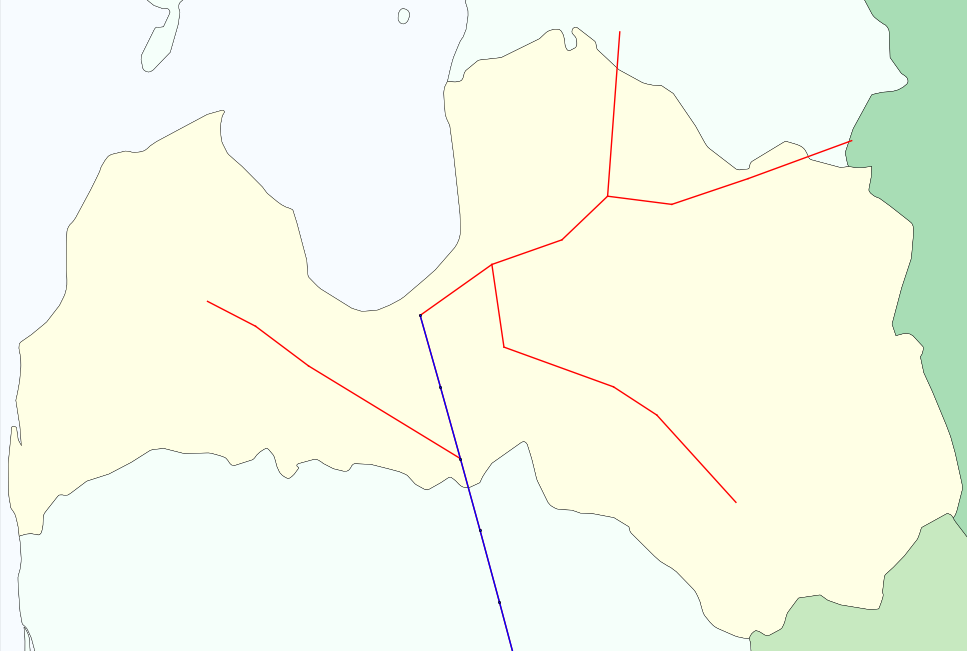Mi 04 März 2020 | -- (permalink)
In the first part, we present some complexity reduction methods for gas pipelines. This methods are necessary for the automated merging of pipelines from different data sources, which is demonstrated in the second part.
Part 1 - Complexity Reduction
Sample 1
To efficently construct networks from (OSM) pipelines, the reduction of information is critical.
This reduction can be achieved by linearizing the pipelines with the following two rules:
1) A pipeline is recursively splitted into segments as long as the resulting segments length is greater max_segment_length.
2) If a segment is shorter than the max_segment_length, it is linearised via its two end points.

Image 1: OSM gas transport pipelines of Latvia. The max_segment_length is set to a) 5 km, b) 10 km, c) 50 km and d) 100 km.
Sample 2
A further way to reduce dense data is to ignore all pipesegments under a certain length treshold.

Image 2: OSM gas transport pipelines of Latvia. All pipelines a linearised to the max_segment_length of 10 km. Than, segments below the min_segment_length of a) 0 km, b) 2 km, c) 5 km and d) 8 km are eliminated.
Part 2 - Pipeline Merging
Sample 3
In this example the only existing (blue) pipeline within the INET data source is segmentized to segments of 50 km. The OSM data (orange) is used in the configuration from Sample 1d).

Image 3: Pre-merged OSM pipeline data (orange) and INET pipeline data (blue).
The merging routine will execute the following rules:
1) Every OSM pipeline segment endpoint (son) is merged into its nearest neighbor node (father), if their mutual distance is lower than the user defined max_merge_radius.
2) The father node inherits all existing connections from the son node.
3) The max_merge_radius is set to slightly less than 50 km

Image 4: Merged OSM pipeline data (orange) and INET pipeline data (blue).
Sample 4
In this example the only existing (blue) pipeline within the INET data source is segmentized to segments of 50 km, as in the example above. The OSM data (red) is used in the configuration from Sample 2c).

Image 5: Pre-merged OSM pipeline data (red) and INET pipeline data (blue).

Image 6: Merged OSM pipeline data (red) and INET pipeline data (blue).
